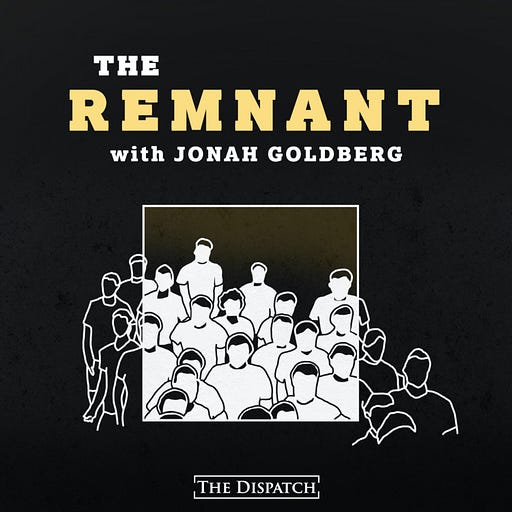If there’s a classic author whom younger, more traditional women often turn to when imagining domestic—and by extension, romantic—ideals, it’s arguably Jane Austen. (And I dare say this holds true regardless of political leaning.) But for many young men, a different author tends to form the romantic imagination: J.R.R. Tolkien. Even Vice President J.D. Vance has dubbed Tolkien his favorite author. In 2024, Vance remarked: “I’m a big Lord of the Rings guy, and I think—not realizing it at the time—a lot of my conservative worldview was influenced by Tolkien growing up.”
While Austen’s novels are full of drawing-room glances and subtle turns of phrase, Tolkien’s are filled with mythic quests and battles for the fate of civilization. In Austen’s works, nearly every paragraph contains a line that could be read one way or another, and as a literature professor, I often liken these moments to the close reading of a possible lover’s text messages: Every pause, ellipsis, or question mark might carry hidden meaning, especially when passed around and analyzed in a group chat.
Tolkien, on the other hand, offers visually descriptive passages that go on for days—the Shire, Rivendell, Mount Doom, Isengard—or so it feels to this female reader. Let us imagine together the average young man’s phone. I rather suspect you won’t find a flurry of emotionally fraught and then later analyzed punctuation, but rather a different kind of visual adventure. And digital behavior research bears this out: Women tend to use their phones for social and emotional connection; men use theirs for entertainment and learning. Men watch more videos, women read more texts. That doesn’t mean young men aren’t also looking for love—or using their phones in a quest to find it. In fact, more young men than women use online dating apps. And while some young women may wonder at their intentions, 69 percent of men ages 18 to 34 want to get married one day, according to the latest Pew research.
So yes, both young women and young men, in their individual ways, usually aspire to the same thing: that one, true ring—the one that resides on the left hand—the band that promises meaning, purpose, and lasting love. It’s just that their paths to it couldn’t seem more different, at least from the outside.
Case in point: Last week, I wrote an article for this esteemed magazine you’re reading now about how the online tradwife fantasy is hurting young women’s and young men’s ability to form lasting relationships—especially as young men are being led to believe by some conservative commentators that real men do not value women’s career ambitions. Part of the problem, I wrote, is the numbers: Women now make up 60 percent of college graduates, and that number is steadily rising. Stated simply, there won’t be enough women willing to abandon their ambitions to fit a narrative that treats a woman’s potential future ambitions—both as potential wives and thinkers—not as a strength, but as a threat.
What was most striking in the responses to the article—both on social media and in the comments section—was how many readers interpreted marriage as a numbers game of an entirely different sort.
The pattern was clear: Again and again, women’s ambitions and their degrees were equated with their future earning power, and how that would stack up to the men in their lives. In one response to my article on X, a reader—who is also a Dispatch contributor—noted that he was quite happy in a marriage where his wife earns more than he does. Rather than seeing this as one potential model of partnership that’s clearly working, though, Matt Walsh responded with his typical critical air:
Oh yeah, it rocks so much that your marriage is 50 percent more likely to end in divorce if your wife earns more than you. It rocks so much that both wives and husbands consistently report being less satisfied in their marriage when the wife earns more. Yeah it absolutely rocks for a man to be in a situation where his wife is a better provider than he is. Totally inverting a system that has worked across all of human civilization since the dawn of humanity is great. Sending the message to your wife that you don’t bring anything to the family that she doesn’t already bring in greater supply is amazing. Good advice. Thanks for the feedback.
It doesn’t take an English professor (like myself) to note that Walsh’s response was the more acerbic of the two. But what struck me about both Walsh’s comment and the initial one was the implicit assumption that career ambitions automatically translate to monetary ones—and that ambition, period, always links to career.
On the contrary, for many women and men alike, ambition is also wrapped up in family life, and it can’t be neatly separated from our paid work. I, for instance, have wanted to be a teacher and a writer for as long as I can remember. And I also remember wanting to be a mom. That hope of motherhood was never separate from the rest of my ambition. Even as a child, I didn’t imagine having to choose between home and work. I wanted both. I still do.
I anticipate objections: Other women pursue degrees with money in mind, don’t they? Of course. One of my favorite authors, Louisa May Alcott, pursued her career primarily—but not only—because she wanted to make money to support her family.
That said, let’s return to Walsh’s comment and my befuddlement. What Walsh seems to be saying is that a man’s ability to provide for his partner—and whether his partner deserves that provision—is tied solely to economics. Indeed, in the original clip that inspired my last article, he claimed, “Most men ideally would like to earn an income that would allow them to be the sole breadwinner in the home.” He added that if men could choose, for a spouse, between a grocery store clerk or a corporate “girlboss,” they would always choose the former. For Walsh, men’s worth is defined by what they produce. And women are ranked on an inverse scale; that is, the more they produce monetarily, the less they are valued.
This model is deficient not only because it’s out of step with modern economic realities, but because it reduces marriage to a market transaction, ranking partners by earning potential instead of recognizing the immense complexity of human purpose. It assumes marriage is something one person does for another, rather than something two people build together. That’s not love: That’s outsourcing. There’s no room for mutual sacrifice, no dignity for stay-at-home fathers or career-oriented wives, no space for roles that shift as life changes—when babies come, careers pivot, parents age, or a move lands you both somewhere unexpected. Nothing in traditional marriage vows mentions income or prenups. No, we vow to look after one another “in sickness and in health,” not “in proportion and in net worth.” Walsh’s version of marriage treats love as a hierarchy, not as a mutual commitment.
“This model is deficient not only because it’s out of step with modern economic realities, but because it reduces marriage to a market transaction, ranking partners by earning potential instead of recognizing the immense complexity of human purpose.”
I suggest a more capacious model for young people. After all, to be “a provider” in a world where women now earn more college degrees than men might require us to broaden our views of one another, women and men alike. Providing, in a world where dual incomes are often necessary to build the kind of life people want for their marriages and families, might mean recognizing that provision looks different in 2025 than it did “since the dawn of humanity,” to use Walsh’s words.
Take this, for example: When I moved across the country for a new job in Texas a few years ago, my husband stayed home with our then very young children while I went to work. Our move was a huge, calculated risk—one he (and we, upon discussion together) believed would prove financially viable for our family in the long run. But for a while, it meant my spouse wasn’t earning anything. You read that right—not a dime. And you’re reading this next part right, too: He was the one who called me the day our daughter took her first steps, not the other way around.
You want to talk about providing? That was providing. So was strategizing a cross-country move, stepping into an unexpected role, and steadying the ship while we waited to see what would happen. And later, when my elderly parents grew ill and eventually died, my spouse provided again—for them, and for me. Time. Space. Stability. Comfort. He provided them all.
Tolkien may have filled his books with legendary journeys and great battles, but those epic moments weren’t ends in themselves. Rather, they were vehicles for exploring underlying truths about the courage it takes to battle life’s ordinary but no less acute trials. As Michiko Kakutani noted recently in the New York Times, Tolkien’s work invites two kinds of reading: one centered on personal adventure (i.e., fighting dragons and mapping uncharted territory) and one grounded in unsung virtue (i.e., that reliable work of relationship and self-sacrifice for the other). Silicon Valley power broker Marc Andreessen champions the former, casting founders of tech companies as lone heroes “bringing home the spoils.” But Tolkien proudly described himself as “a Hobbit (in all but size)” and favored the latter. Indeed, his true hero in the Lord of the Rings trilogy is Sam Gamgee, the Hobbit who carries his friend up a mountain and then returns home to build a life with his wife and thirteen children.
The takeaway is this: In Tolkien’s world, provision is measured not by conquest, but by constancy, by the daily, deliberate acts of love that sustain relationships, and, by extension, create a more virtuous world—and in some cases, save the world. Sometimes the bravest thing you can do for your spouse is choose a path that doesn’t myopically focus on a paycheck, but adapts to the shifting needs of the person (and people, if children are involved) right in front of you.
Indeed, Tolkien once gave this advice about marriage to his son: “Nearly all marriages, even happy ones, are mistakes: in the sense that almost certainly (in a more perfect world, or even with a little more care in this very imperfect one) both partners might have found more suitable mates. But the ‘real soul-mate’ is the one you are actually married to.” Notably, these lines came not from fantasy, but from his own life. Tolkien met his wife Edith when he was 16 and felt immediately that she was the one. Yet he was forbidden to contact her for five excruciating years. On his 21st birthday, he wrote to her without hesitation. Within a week, they were engaged.
They were young. What did he really know of her then? Not much, perhaps. But what he told his son when reflecting on their marriage many years later is telling: Love—like provision—is a matter of commitment, sacrifice, and choosing to show up for the person in front of you, not for the fantasy in your head. Even when the road is hard. Even when that person doesn’t live up to your every expectation.
Tolkien shares further: “No man, however truly he loved his betrothed and bride as a young man, has lived faithful to her as a wife in mind and body without deliberate conscious exercise of the will, without self-denial.” That line, to me, is more romantic than any sweeping declaration you might find in a Harlequin paperback. Because someone willing to fight for love, not only in a blaze of glory, but also in the thousand small, unnoticed choices of daily life, is someone worth loving in return. The road through Mordor and toward salvation, it turns out, doesn’t always look like fire and shadow followed immediately thereafter by fresh-grown fields and spring blossoms. Sometimes it’s far more mundane: It looks a lot more like the school pickup line. Or folding the laundry. Or changing diapers.
That doesn’t make the love any less romantic. It makes it more real.
I turn again to Tolkien here to make another point: There are many kinds of men in his stories. We have discussed Sam above. His friend Frodo is likewise winsome, loyal, and kind—and while tempted by the ring’s power, he does his best to resist it. Gandalf is wise, yes, but also cheerful, lighting a way forward in the darkness. Aragorn is a fighter, a leader whom others rally behind—and, most pertinent here, he falls in love. He waits years for Arwen, in part because her father, Elrond, insists he must become king first, not simply as proof of destiny, but to show he is mature enough to carry both a crown and a marriage (not to mention the weight of the sacrifice Arwen will make for him, as she must give up immortality to be with him).
I describe these different kinds of men in depth because they remind me of the way Austen writes women: varied, unique, and capable of meeting the challenges of their time with courage and aplomb. The lesson from Austen and Tolkien together may, then, be this: All men are not the same; they do not all want the same kind of woman. And: All women are not the same; they do not all want the same kind of man. Relationships shift, as they must, according to who is in them, according to the one who could become “the one you’re actually married to,” and how participants must navigate their particular circumstances together.
More than 200 years ago, Austen began Pride and Prejudice with the classic line, “It is a truth universally acknowledged, that a single man in possession of a good fortune must be in want of a wife.” Perhaps in 2025, we might revise it this way: “It is a truth oddly persistent that no matter how much a woman has achieved, she must be in want of a husband with a higher salary and a slightly better parking spot.”
Yet, she often isn’t.
Rather, she’s in want of a partner. One who doesn’t flinch if she gets the promotion. Doesn’t panic if he’s the one packing the school lunches. Who knows that providing isn’t just about income. And that the ring on the finger doesn’t have to come with a paycheck to prove its worth.
That’s not the end of civilization. It’s the beginning of a new, real quest for American men. A quest where the one ring that matters isn’t forged in wealth or power, but in promise. Where the bravest thing a man can do is offer his whole self, not just his monetary worth, and to share his life’s story with someone he cares about—and who cares about him right back.







Please note that we at The Dispatch hold ourselves, our work, and our commenters to a higher standard than other places on the internet. We welcome comments that foster genuine debate or discussion—including comments critical of us or our work—but responses that include ad hominem attacks on fellow Dispatch members or are intended to stoke fear and anger may be moderated.
With your membership, you only have the ability to comment on The Morning Dispatch articles. Consider upgrading to join the conversation everywhere.